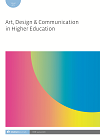
Full text loading...

Developing the creativity of design students is widely considered to be an important goal in design education. Finding effective training and instruction to improve creativity is a challenging subject for design educators and researchers. The aim of this study is to examine the effect of relational thinking training on creativity of design ideas in an analogical design task. The proposed training consisted of three steps: finding relations between two sources; the characteristics of each source; and relations between a new idea and the sources. The participants were 45 second-year architectural design students. The results indicated that the training significantly improved the quality of design ideas and significantly changed the type of similarity that designers established between source and design idea from literal similarity to analogical similarity. We concluded that stimulating relational thinking of design students by an educational training is an effective way in design education to improve the design creativity.

Article metrics loading...

Full text loading...
References


Data & Media loading...

Publication Date:
https://doi.org/10.1386/adch_00015_1 Published content will be available immediately after check-out or when it is released in case of a pre-order. Please make sure to be logged in to see all available purchase options.